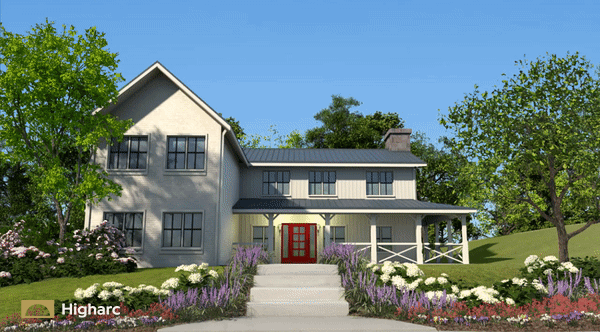Anyone who’s played The Sims (especially with cheat codes) knows the fun and ease of designing your own home. Anyone whose designed an actual, IRL home knows it’s nothing like that.
For homebuyers who want a custom home, they often encounter a frustratingly opaque and expensive process, or are stuck with pre-made plans that look like everyone else’s. They’re left, as Michael Bergin, co-founder and director of architecture at the architectural startup Higharc puts it, with “houses that are just left without design.” And even getting an architect to customize stock home plans, like those found freely or affordably online, Bergin says, can wind up costing at least in the low five figures, so instead most go for pre-designed plans. “People spend their entire savings, everything that they have, on something that’s not fit for them.”
Higharc believes there could be a “middle ground” in home architecture. To that end, they’ve developed a web-based home design app aimed at the everyday user and homebuyer. “We are trying to…address fundamental inefficiencies, structural challenges in the home building,” says Bergin. “The product that we are developing isn’t going to replace an experienced 20-year architect,” he admits, but it will, Higharc hopes, make customization much more accessible to a wider swath of new home buyers.

Higharc is trying to embed “architectural intelligence” directly into their web-based software. Their app uses, among other technologies, “procedural generation,” a computational technique borrowed from video games (one of Higharc’s founding members, Thomas Holt, has game industry experience), that generates graphics algorithmically on the fly. “The difference between where this lands in gaming and our approach is that we’re building in these heuristic or structural rules, so that no house that’s produced in our system is structurally deficient,” explains Bergin. “[Higharc] looks at the international building code and prescriptive span tables and ensures that every house that we are producing is something that’s buildable.” (A recent Curbed article reports that many of these code data come from the International Code Council, which recently sued the startup UpCodes.) Higharc say that as they expand into new markets (they’re currently beginning their first role out in the Chapel Hill, N.C. area), they are also incorporating regional building codes.
To help with siting, Higharc pulls in public GIS data. Users can pick a plot anywhere in their area from a Google Maps–like interface and try out building their home. They can then take their design and see how it fits on another plot, and Higharc will adjust the home accordingly to make sure it fits just right on the new site.
Though, right now at least, The Sims comparison might go a little too far—those 3D characters don’t have to worry too much about structural integrity, after all. Higharc allows users to choose from a series of options—preset aesthetics, number of bedrooms, guest suites, great rooms, number of floors, garages, outdoor living, the size of each room, etc.—and automatically generates a home optimized for the user selections and the chosen plot, immediately adjusting and restructuring the entire home as the homebuyer switches options. All the while, the software displays an estimated cost range that adapts with each change to help users stay on budget. “We’re making [home building] a fun process, making it an accessible process for everyone,” claims Bergin. “Ultimately, we just want to make better neighborhoods and give home buyers and builders choice—and agency.”
